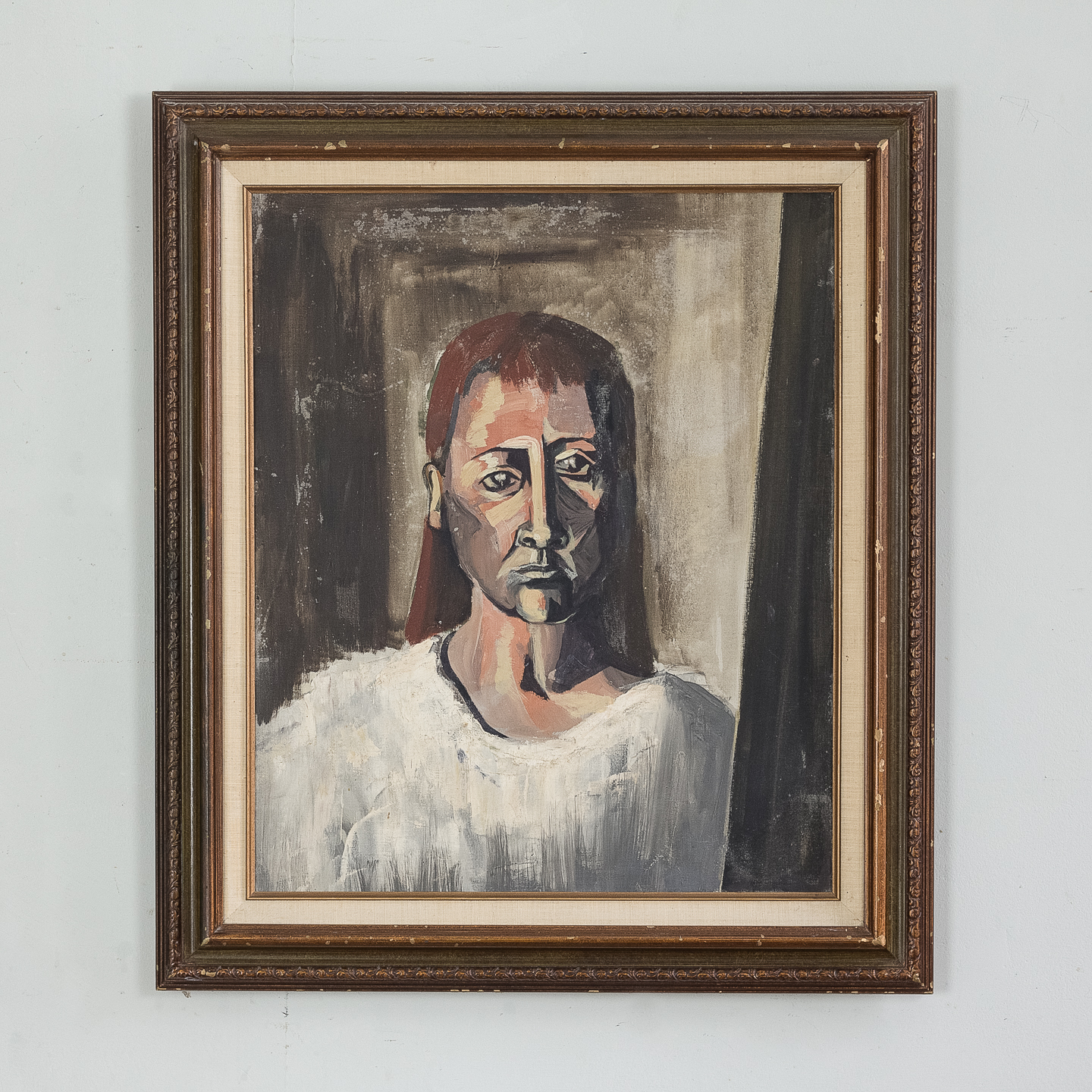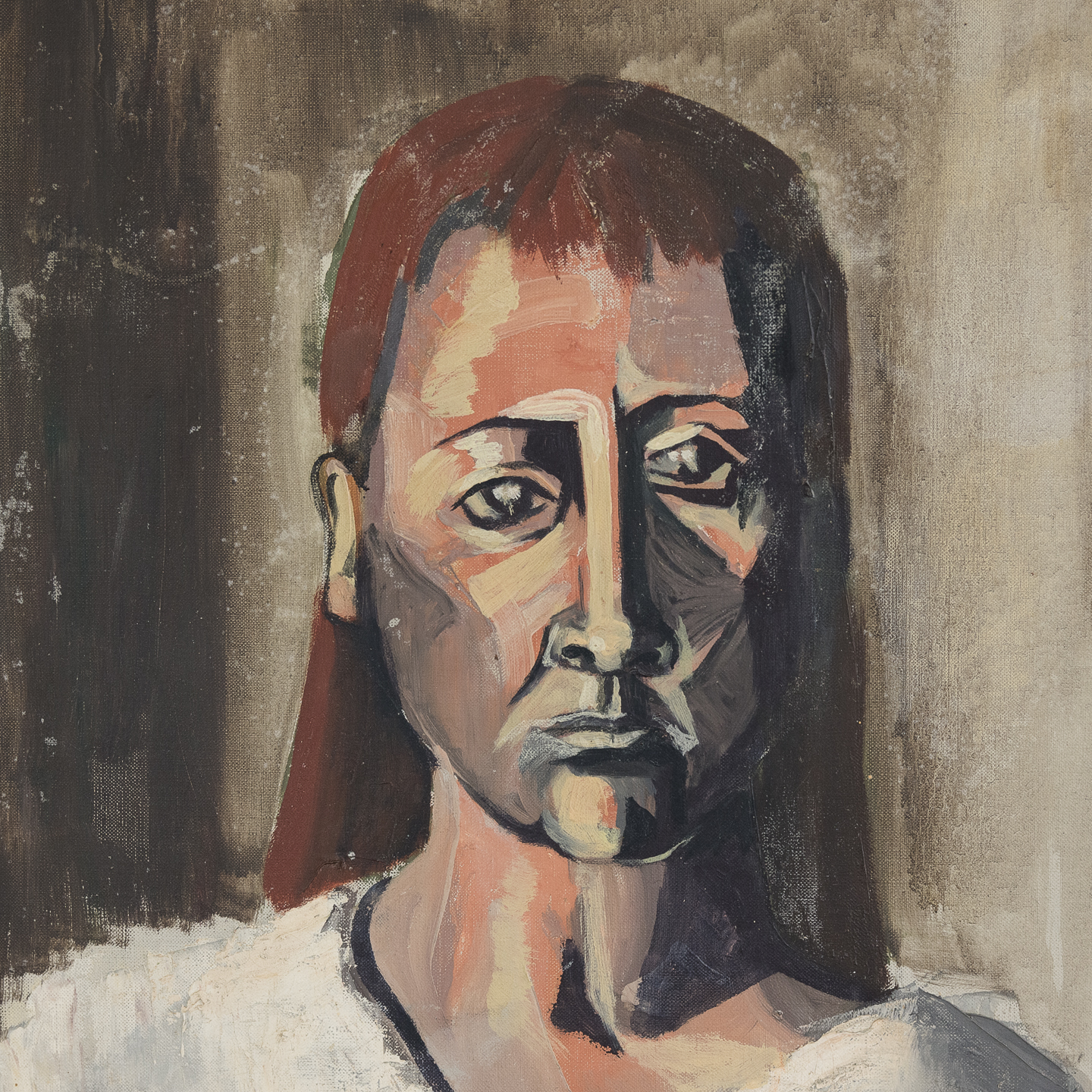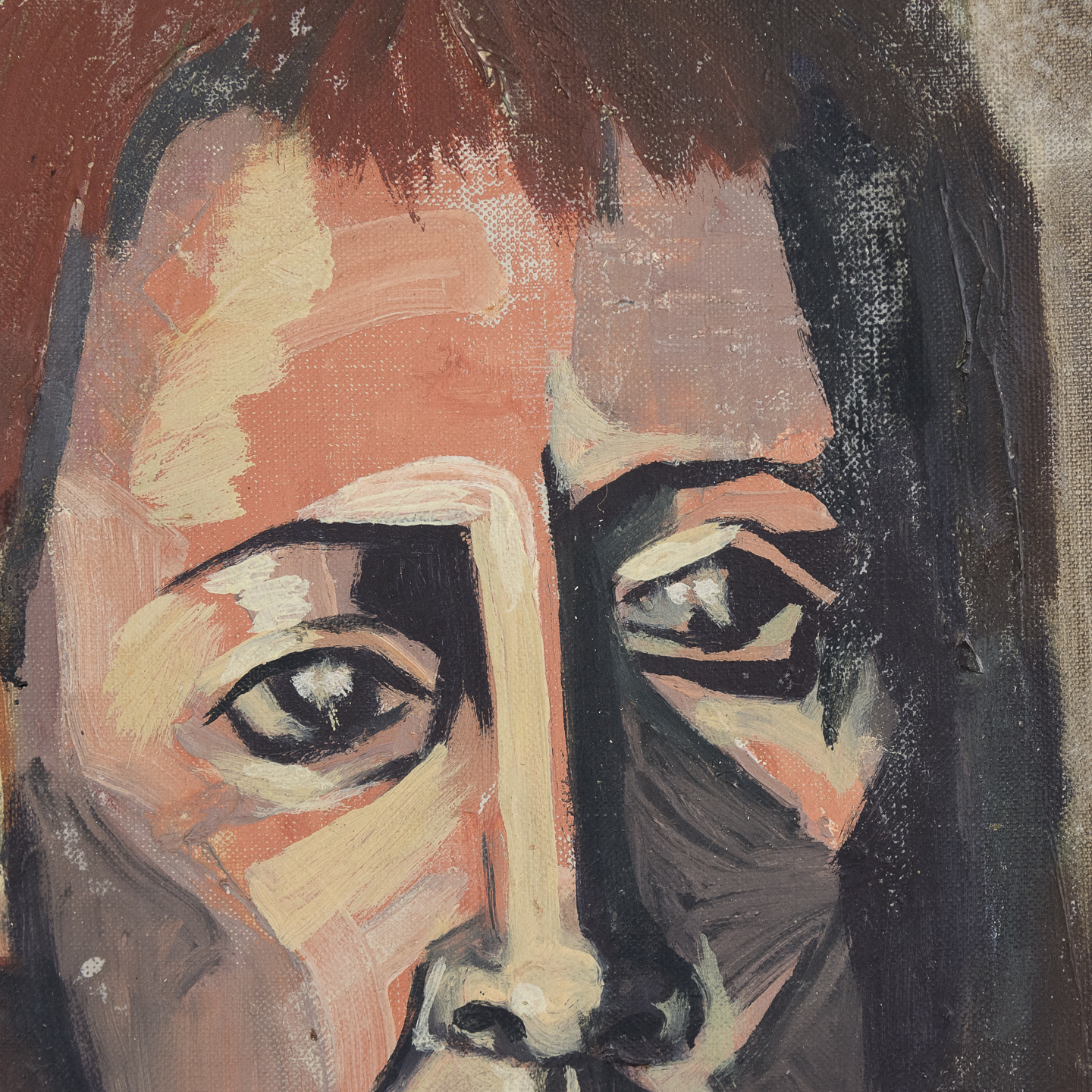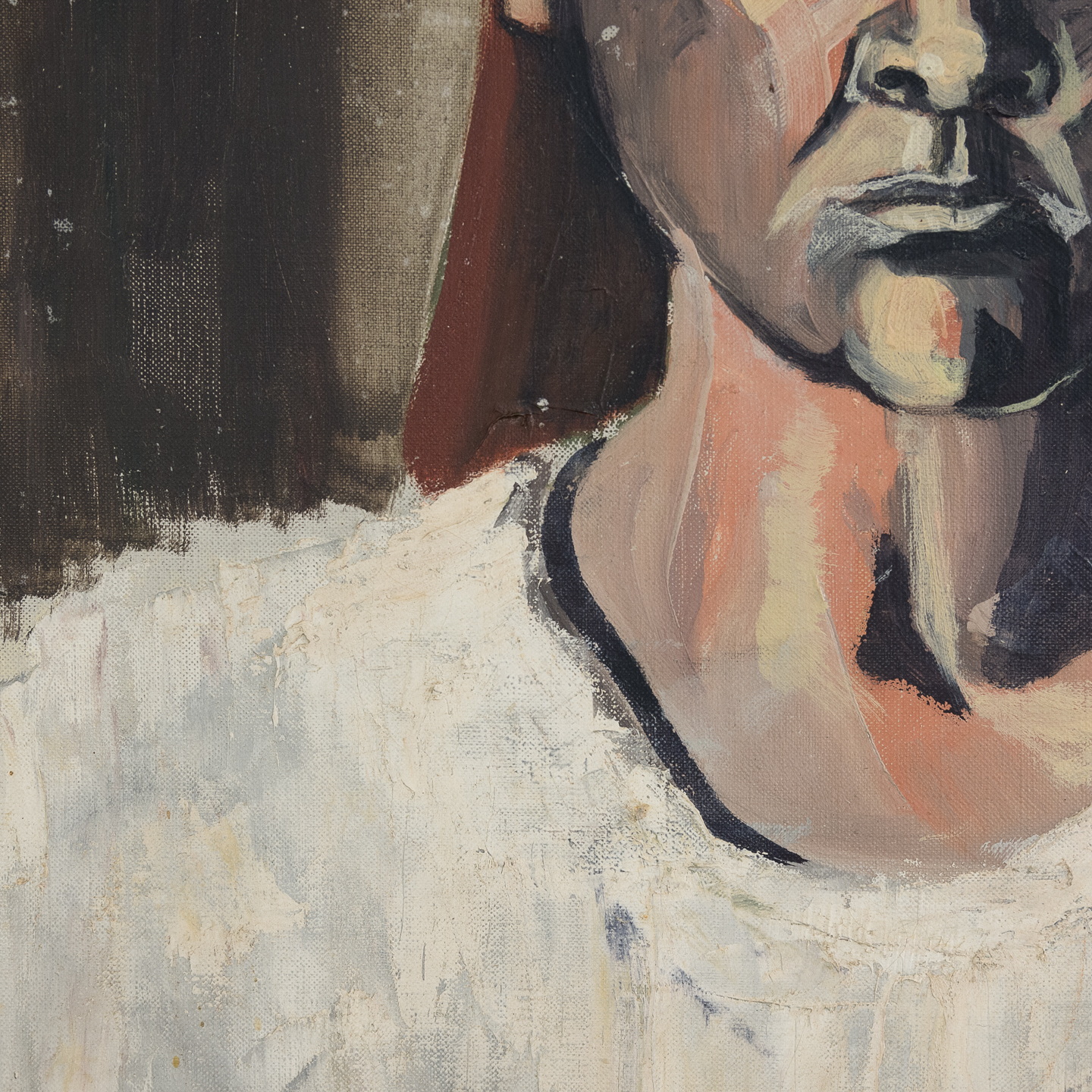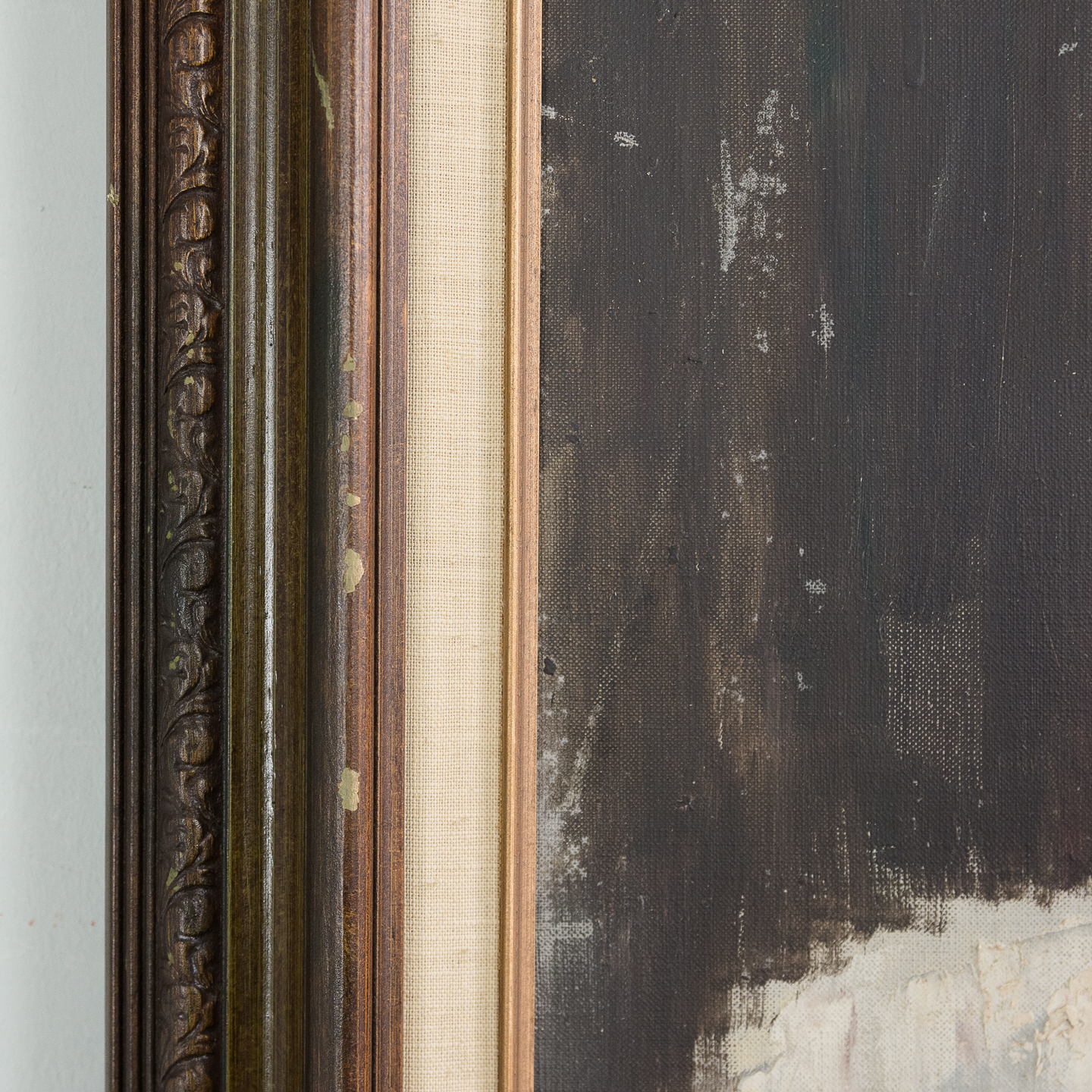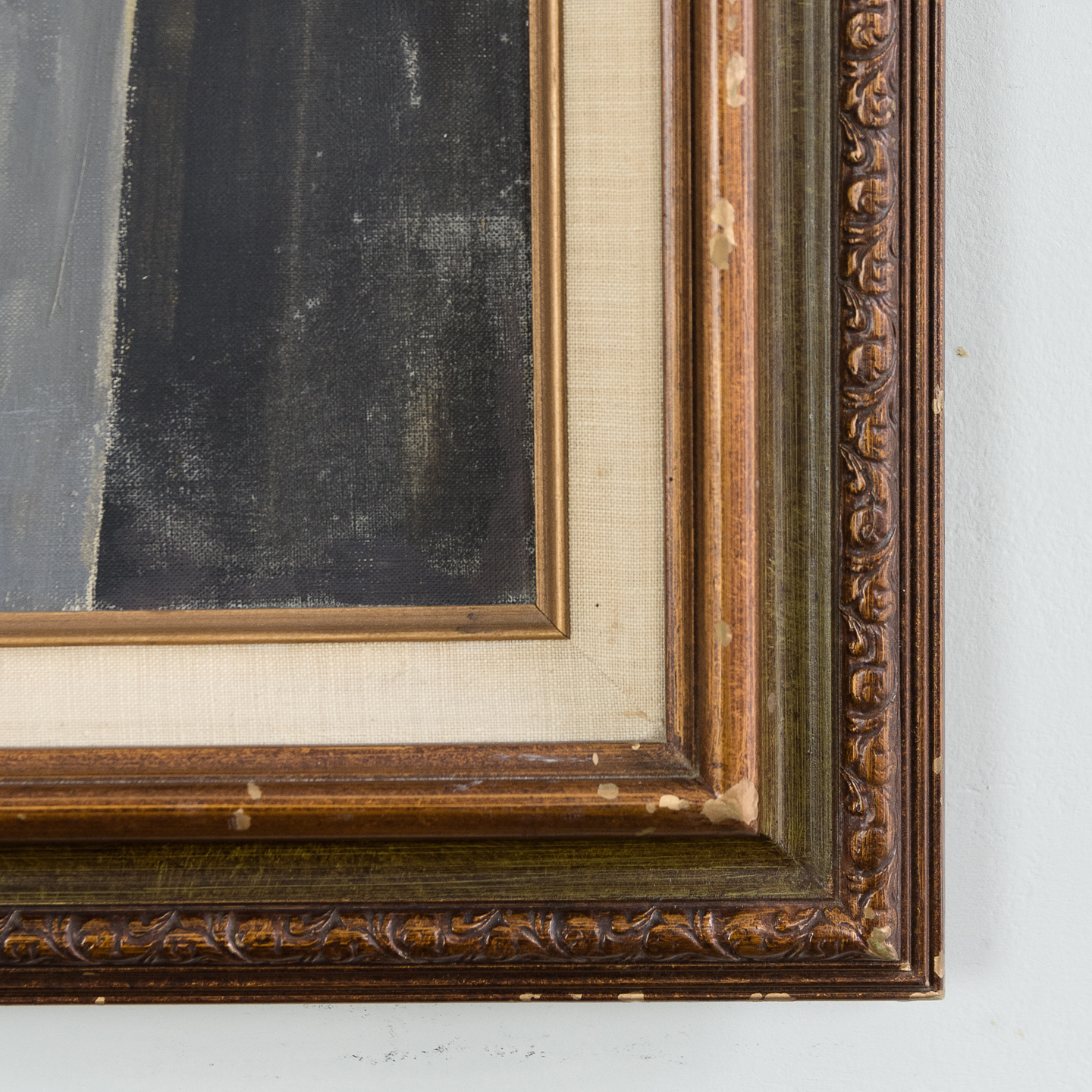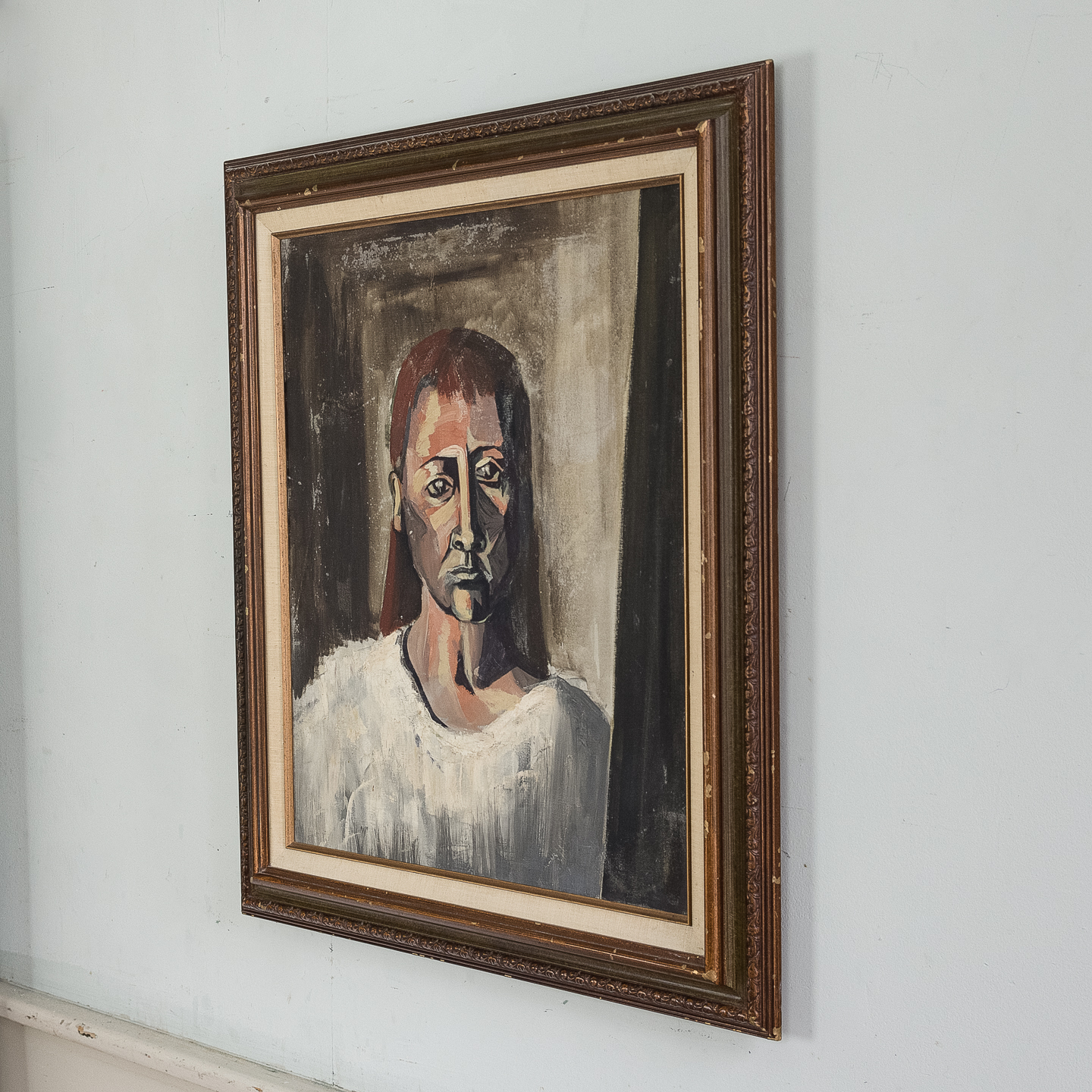Harry by Sheila Steafel,
Oil-on-canvas of actor Harry H. Corbett
Framed portrait of the artist's then husband, Harry H. Corbett.
£300
In stock
Sheila Steafel, was well-known as a versatile comic and character actor. Appearing in many landmark television program during the 1960s.
Born in Johannesburg, South Africa, Sheila the daughter of Harold and Eda. She studied fine art At Witwatersrand University, but abandoned the course to travel to Britain to audition for the Royal Academy of Dramatic Art in London in 1953.
In 1958 she married the actor Harry H Corbett but divorced in 1964 and did not marry again.

